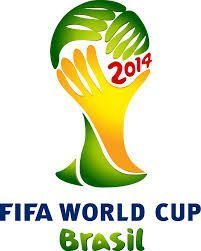The FIFA World Cup begins today in Brazil, starting with a match between the host country and Croatia in São Paulo at the Arena Corinthians. Around 600,000 foreign tourists are expected to arrive in Brazil for the World Cup, and according to the telecom union SindiTelebrasil, telecom operators’ networks are ready to handle the increased data and voice traffic.
Major carriers Claro, Oi, Nextel, TIM and Vivo have teamed up to deploy indoor wireless coverage at all 12 stadiums. The infrastructure follows the guidelines used during the London Olympic games. Together, the carriers made investments totaling $101.2 million to build shared optic fiber and antenna infrastructure.
In total, 3,724 indoor cellular antennas and 1,014 Wi-Fi antennas were installed in the arenas to provide voice and data services for 2G, 3G and LTE services. In Brazil, LTE was deployed in the 2.5 GHz band, which will limit access to most tourists as device support for that deployment is very limited.
The carriers are using 144 radio base stations to cover areas outside the arenas, an average of 12 antennas per stadium. Telecom operators also deployed Wi-Fi offload projects to cover external areas near the arenas in the cities of Brasília, Cuiabá, Manaus, Porto Alegre, Rio de Janeiro and Salvador.
As for LTE coverage, all the cities that are hosting soccer games have 4G services. Currently, in Brazil, there are 2.5 million LTE connections, and carriers are continuing to expand service coverage. Vivo leads in LTE coverage, reaching 94 cities.
In total, the carriers invested $580.8 million to better prepare the cities that are hosting the games, with improvements focused on both 3G and 4G coverage. The companies say that over the past year, more than 15,000 new 3G and 4G antennas, and 120,000 Wi-Fi hot spots were installed. In addition, more than 10,000 kilometers of optical fiber were added.
LTE in the region: 4G Americas reported that LTE subscriptions in Latin America grew 50% from two million to three million in the first quarter of this year. Chris Pearson, president of 4G Americas, said that Brazil is leading the region in the addition of LTE connections, spurred by the World Cup and plans for the 2016 Olympics. “The demand for mobile broadband services across the region continues to positively affect the increase in LTE subscriptions,” he said.
More news from Latin American region:
- Chile’s new telecom act is expected to take effect on June 15. The law seeks to give the market greater transparency and protect the rights of users when purchasing a service. The act, drafted last year by the Department of Telecommunications (Subtel), also establishes rules and obligations for operators.
- In Bogotá, ETB began a trial of LTE services, with plans to cover 85% of municipalities by the end of this year.
- Ecuador’s government is preparing to negotiate new 4G concessions with operators, the country’s president Rafael Correa said.
- The Mexican unit of Spain’s Telefónica told Reuters that it will focus on expanding its mobile business rather than adding new services as it tries to capitalize on a regulatory overhaul and steal market share from America Movil.
- Millicom has launched satellite pay-TV services in two more countries: Costa Rica and Honduras. The service is already available in Bolivia and El Salvador; operations began there in April and May this year respectively.
- Uruguay’s government-owned telecom company Antel selected Alcatel-Lucent’s small cell technology to boost its mobile broadband capacity in congested and difficult-to-reach areas.
- Telefónica has selected Amdocs to upgrade its business support systems in Chile and in Peru.
Wondering what’s going on in Latin America? Why don’t you follow me on Twitter? Also check out all of RCR Wireless News’ Latin American content.

